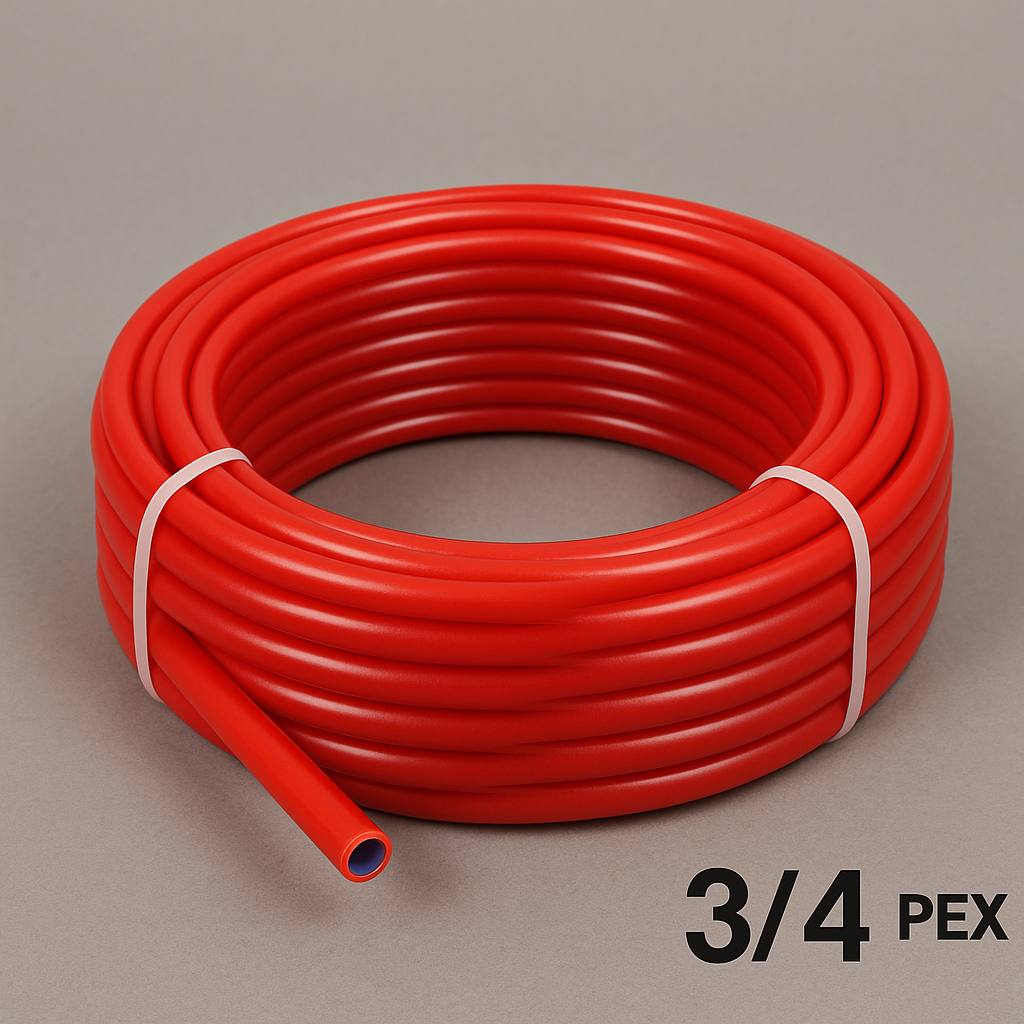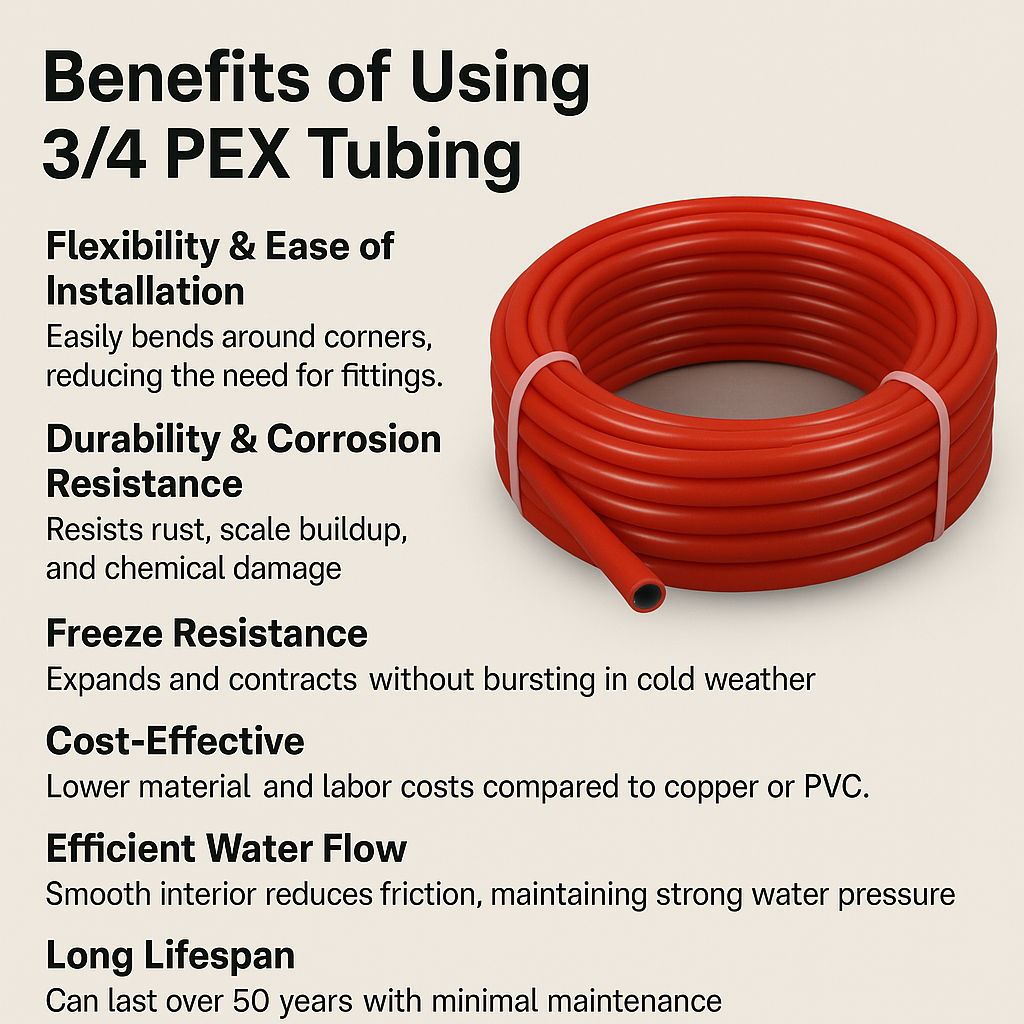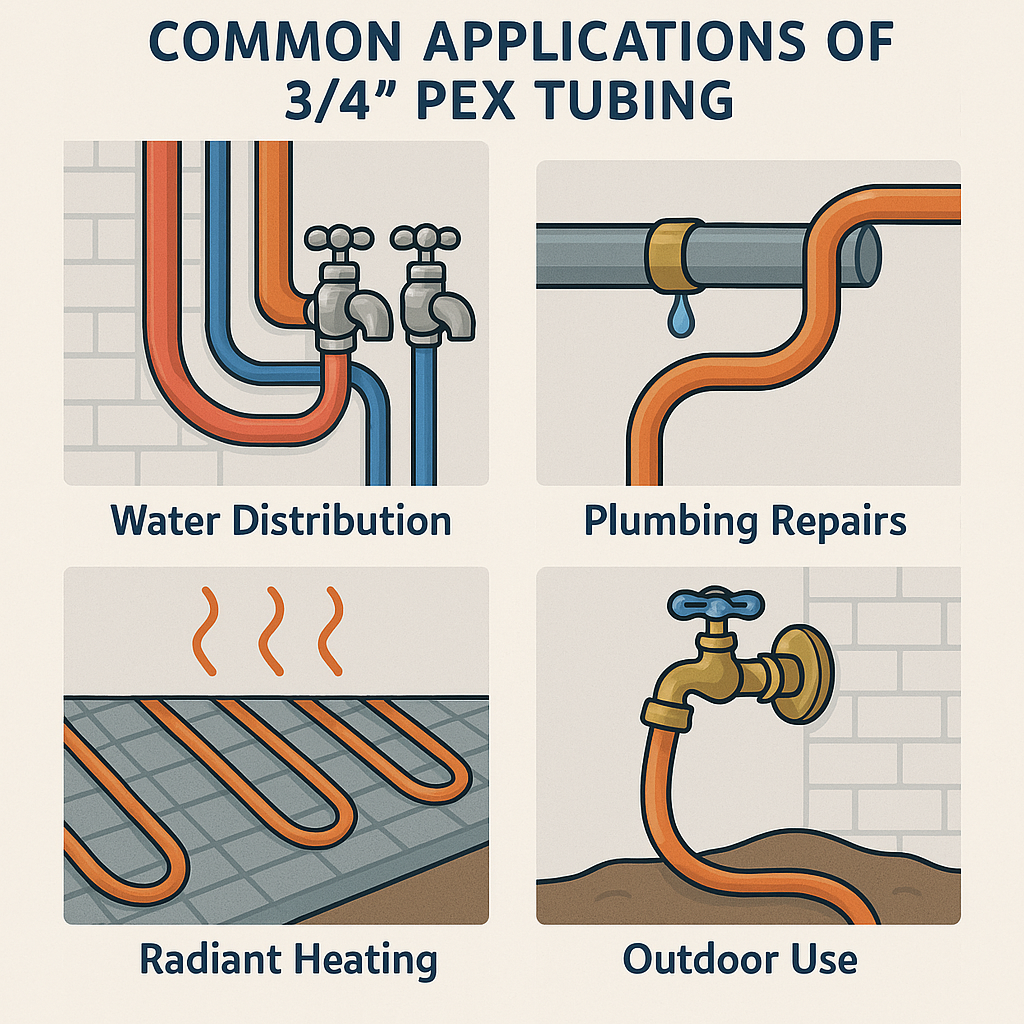Understanding 3/4 PEX Tubing: Benefits, Applications, and Installation Guide

Introduction
PEX (cross-linked polyethylene) tubing has revolutionized the plumbing industry by offering a flexible, durable, and cost-effective alternative to traditional copper and PVC pipes. Among various sizes, 3/4 PEX tubing is a widely used option due to its ability to handle substantial water flow while maintaining flexibility and ease of installation. Whether you’re working on residential plumbing, radiant heating, or irrigation systems, 3/4 PEX tubing provides a versatile solution.
This article explores everything you need to know about 3/4 PEX tubing, including its benefits, common applications, installation process, and how it compares to other piping options. By the end, you’ll have a clear understanding of why 3/4 PEX tubing is a preferred choice in modern plumbing and construction projects.
What is 3/4 PEX Tubing?
PEX tubing is a type of plastic pipe made from high-density polyethylene that has been chemically or physically cross-linked to improve its strength and flexibility. 3/4-inch PEX tubing refers to the nominal diameter of the pipe, making it ideal for applications that require moderate to high water flow.
Key Characteristics of 3/4 PEX Tubing:
- Flexibility: Easily bends around obstacles, reducing the need for fittings.
- Durability: Resistant to corrosion, scale buildup, and freezing temperatures.
- High Flow Capacity: Allows a significant volume of water to pass through, making it suitable for main supply lines.
- Compatibility: Works with various connection methods, including crimp, clamp, push-to-connect, and expansion fittings.
- Temperature and Pressure Ratings: Can withstand high temperatures (up to 200°F) and pressures (typically 80-100 PSI for residential use).
Benefits of Using 3/4 PEX Tubing

1. Easy Installation and Handling
PEX tubing is much easier to install than traditional metal pipes. Unlike copper, which requires soldering, PEX connections can be made using simple crimp or clamp fittings, reducing installation time and labor costs.
2. Resistance to Corrosion and Scale Buildup
Unlike metal pipes, PEX does not corrode or develop scale deposits, ensuring a longer lifespan and consistent water pressure over time.
3. Freeze Resistance
PEX tubing can expand and contract, making it less likely to burst in freezing temperatures compared to copper or PVC pipes.
4. Cost-Effective Solution
PEX is generally more affordable than copper and requires fewer fittings, reducing overall project costs.
5. Noise Reduction
PEX tubing minimizes water hammer and other noise issues common in metal pipes, providing a quieter plumbing system.
Common Applications of 3/4 PEX Tubing

1. Residential Plumbing Systems
3/4-inch PEX tubing is commonly used as a main water supply line in homes, delivering water to multiple fixtures while maintaining adequate pressure.
2. Radiant Floor Heating
PEX is an excellent choice for hydronic radiant floor heating systems, efficiently distributing hot water under flooring for even heating.
3. Outdoor and Irrigation Systems
Due to its UV resistance and durability, PEX tubing is often used for irrigation systems, sprinklers, and outdoor plumbing applications.
4. Commercial and Industrial Applications
In larger buildings, 3/4 PEX tubing is used in supply lines for efficient water distribution in apartments, offices, and commercial properties.
How to Install 3/4 PEX Tubing

1. Gather Necessary Tools and Materials
To install 3/4 PEX tubing, you’ll need:
- PEX tubing (3/4 inch)
- PEX fittings (crimp, clamp, or push-to-connect)
- PEX crimping tool or expansion tool
- Pipe cutter
- Measuring tape and marker
2. Cut the Tubing to the Required Length
Use a PEX cutter to make clean, straight cuts on the tubing. Avoid jagged or uneven edges to ensure a proper connection.
3. Choose a Connection Method
There are several ways to connect PEX tubing:
- Crimp Method: Uses copper rings and a crimping tool to secure fittings.
- Clamp Method: Utilizes stainless steel clamps and a clamping tool for a secure connection.
- Expansion Method: Requires an expansion tool to widen the tubing before inserting fittings.
- Push-to-Connect: Simple, tool-free connections that work well for quick repairs and installations.
4. Secure the Tubing in Place
Use pipe supports or straps to keep the tubing in position, ensuring it remains free of kinks and bends that could restrict water flow.
5. Test for Leaks
Before finalizing the installation, turn on the water supply and check for any leaks. If needed, tighten connections or replace faulty fittings.
Comparing 3/4 PEX Tubing to Other Pipe Materials
| Feature | 3/4 PEX Tubing | Copper Pipe | PVC Pipe |
|---|---|---|---|
| Installation | Easy (crimp, clamp, push-fit) | Requires soldering | Glue joints required |
| Flexibility | High (bends easily) | Low (rigid) | Medium (some flexibility) |
| Corrosion Resistance | Excellent | Prone to corrosion | Excellent |
| Freeze Resistance | Expands without bursting | May burst in freezing temperatures | Can crack in extreme cold |
| Cost | Affordable | Expensive | Low cost |
| Durability | 50+ years | 50+ years | 25-40 years |
Frequently Asked Questions About 3/4 PEX Tubing
1. Can I Use 3/4 PEX Tubing for Hot Water Lines?
Yes, PEX tubing is rated for both hot and cold water applications, making it suitable for household plumbing and heating systems.
2. How Long Does 3/4 PEX Tubing Last?
PEX tubing has a lifespan of 50+ years when properly installed and maintained.
3. Is 3/4 PEX Tubing Safe for Drinking Water?
Yes, PEX tubing is approved for potable water use and does not leach harmful chemicals.
4. Can 3/4 PEX Tubing Be Buried Underground?
Yes, PEX tubing can be used for underground water lines, but it should be protected with a sleeve in direct sunlight exposure areas.
5. Do I Need Special Tools to Work with 3/4 PEX Tubing?
Yes, depending on the connection method, you may need a crimping tool, expansion tool, or a pipe cutter.
Conclusion
3/4 PEX tubing is a reliable, versatile, and cost-effective solution for modern plumbing systems. With its ease of installation, resistance to corrosion, and ability to handle various applications, it’s no wonder that PEX has become a preferred choice for both professionals and DIY enthusiasts. Whether you’re installing a new water supply line, setting up radiant heating, or working on an irrigation project, 3/4 PEX tubing provides durability, flexibility, and long-term performance.
By understanding its benefits, installation methods, and best practices, you can make informed decisions and ensure a successful plumbing setup that meets your needs for years to come.





